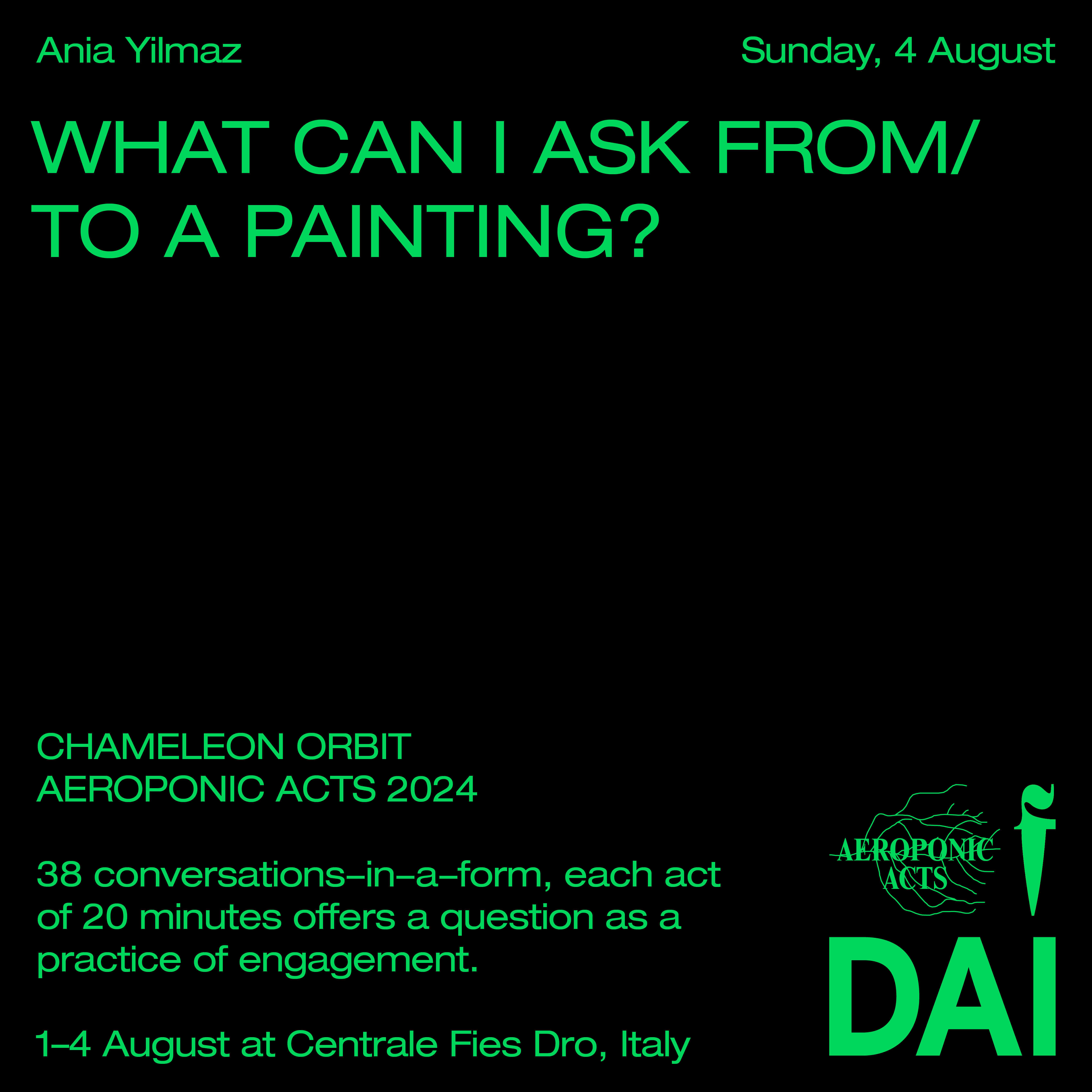Ania Yilmaz ~ The Possibility of an Island
I talk of a painting that is not there yet. I hope it will appear after (more or less) 21 days of work. It is a painting made of recollections of other paintings, by me and others. It all started with a visit to a museum and an encounter with the heritage of a vase-painting workshop operating in the 3rd century BC, in the island of Lipari. This encounter sparked my artistic research into and around painters and vases, and one of the research’s results is this painting. It is rough and hasty and a little torn. Before it appears, I don’t know what it is. It will be painted on linen, using everything that is around (or not): white chalk, rabbit glue, kaolin, pigments, white wine, egg yolk, crayons, pencil, ink, pastel, acrylic. It might be a mess.
(ps: I stole the title from Michel Houellebecq)
AEROPONIC ACTS 2024 ~ Chameleon Orbit

